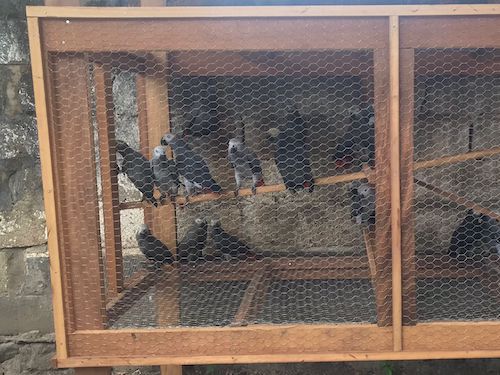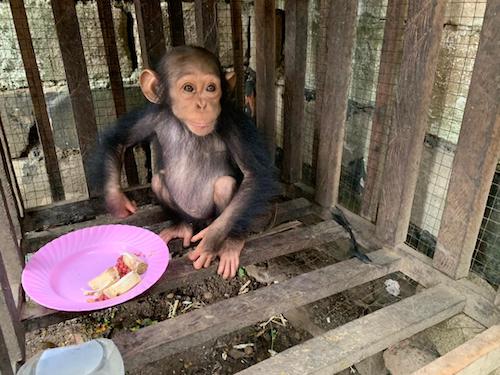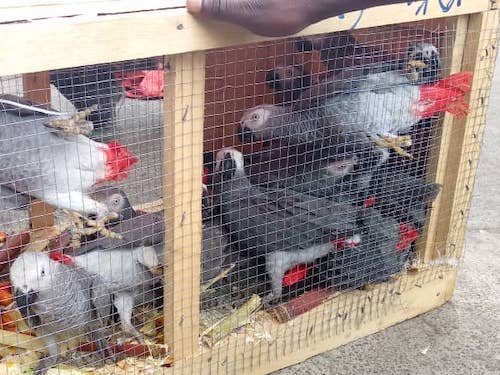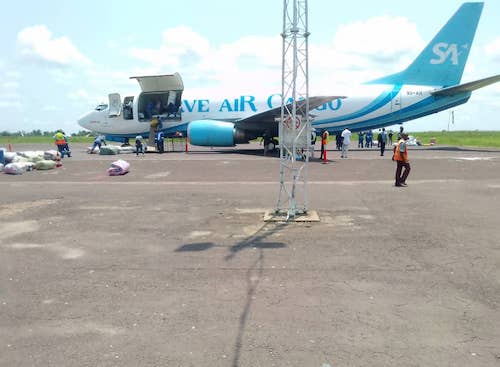Thank you for Showing your Love to Lovebirds!
Last year, many of you showed love for wild lovebirds by supporting WPT’s Valentine’s campaign, raising vital funds for the conservation of these very special birds. These donations underpinned important progress for some of Africa’s most threatened parrots, including the first-ever trial of nest boxes as a conservation tool for wild lovebirds, the launch of a community education and awareness project around Liwonde National Park, and vital research into the genetics of wild lovebird populations. In 2022 we are looking forward to building on these successes in several exciting ways.
Using artificial nest boxes as a conservation tool
Firstly, we were able to set up 60 artificial nest boxes in Malawi, exploring how they can be used to boost breeding populations of some of Africa’s most threatened lovebirds. Nest boxes are an important conservation tool for many threatened parrots, but this is the first time they have been used for lovebirds. These boxes will be monitored throughout 2022 and over the coming years providing information that will guide future conservation efforts. With the breeding season just around the corner, we are now impatiently waiting for news from the field. Stay tuned for updates! Habitat and nest tree loss is a major threat to wild lovebirds in southern Africa and in 2022 we are looking to expand this project to support threatened lovebirds elsewhere. Read more about the 2021 project here.
Encouraging local people and their children to be lovebird protectors
Communities lie at the heart of solutions to address threats to lovebirds such as waterhole poisoning and the loss of nesting trees. In 2021 the World Parrot Trust’s Lovebird Conservation Officer Dr. Tiwonge Gawa and the Wildlife and Environment Society of Malawi initiated a community education and awareness campaign focused around Liwonde National Park. A fun and interactive brochure has been developed, highlighting not only lovebirds but all of Malawi’s parrot species. This brochure is being used in schools to engage children in parrot and wildlife conservation building the next generation of parrot protectors. This project was a huge success with kids being educated in a fun and entertaining way. The programme will be continued in 2022 and plans are afoot to expand and replicate this project in other areas and countries that lovebirds call their homes.
Understanding genetics: A conservation priority
This wasn’t it for 2021: besides setting up artificial breeding boxes and the launch of the education program, Sascha Düker - WPT’s lovebird conservation coordinator - and his team were busy collecting genetic samples of wild lovebirds. Genetic research has been identified as a conservation priority for lovebirds, helping both in situ as well as ex-situ initiatives in multiple ways. Since 8 of the 9 lovebird species hybridize (mate and exchange their genetic material between different species) freely and readily in captivity, we need to find out more about their genetic codes. This information will help understand connectivity between wild populations, identify conservation priorities and inform reintroductions, restoring lovebirds to areas where they have historically been extirpated due to human pressures. In 2021 we launched field expeditions to survey all existing populations of Lilian’s lovebirds (Agapornis lilianae) and Black-cheeked lovebirds (Agapornis nigrigenis). These species can only be found in a few locations in the Zambezi river basin in southern Africa and are considred Vulnerable and Near-threatened on the IUCN red list. Despite the challenges of fieldwork, how amazing is it to tick this work off as being completed in just a year?! Keep an eye out for adventurous tales from the field in an upcoming issue of Psittascene. In 2022 expeditions are planned to sample the two other “white eye-ring” species: A. fischeri and A. personatus in Tanzania. This work will help understand a hybrid population established due to the loss of a natural barrier once separating those species. Could there be undescribed lovebird species out there? What will the genetic codes reveal?
New Fischer's lovebird survey needed; last count was taken in 1993
Working with researchers and conservationists throughout Africa in 2021, Sascha Düker led a process of reviewing the research and conservation priorities for lovebirds in the wild. Despite the popularity of lovebirds as companion birds, surprisingly little is known about their wild relatives. One of the priority actions highlighted by the review is to resurvey the population of Fischer’s lovebirds in Tanzania. Endemic to Tanzania, over half a million individuals of A. fischeri were legally caught and exported between 1980-1990. This dramatic number led to a population survey in 1993 by the IUCN and an end to legal exports. Little is known about how populations have changed in response to conservation measures and environmental changes and repeating this survey is a high priority to understand the current situation for lovebirds in Tanzania, almost 30 years since they were first surveyed!
This work has been possible through collaborations with many other organisations in the region including BirdWatch Zambia, the Wildlife and Environment Society of Malawi, African Parks, the Malawi Universty of Science and Technology and Zambia Wildlife Authority and through the support of WPT's "Show Some Love to Lovebirds" campaign, a generous gift from Pamela Isdell, the Parrot Society UK, Gesellschaft für Tropenornithologie e. V., Swissline cosmetics, International Foundation for Science and BirdLife International/Good Gifts catalogue, and the African Bird Club.
We thank YOU as well as our partners and collaborators for the 2021 success and motivate you to continue with us on this journey in 2022.
There is an incredible amount of important work to be done for lovebirds and we are ready to tackle it!
Click here to learn how you can help support lovebirds in the wild »

The Lovebird Team in the field

WPT Lovebird Conservation Coordinator Sascha Düker up a tree with a nest box

Tamara sampling lovebirds in Liwonde National Park Malawi
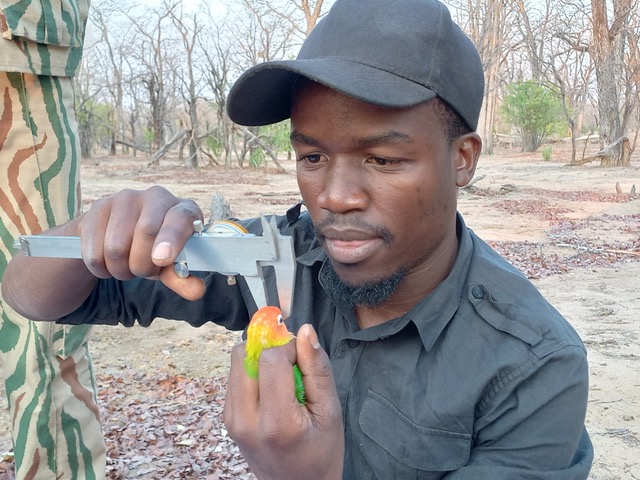
Swithin Kashule of BirdWatch Zambia examiing a Lilian’s Lovebird in the field

Lilian’s Lovebird in Zambia

Black-cheeked Lovebird in Zambia
On the 6th September 2021, 60 African Grey parrots were far from their home of the lush African forests; instead, they sat on a dusty runway in the remote town of Lodja in Sankuru province, Democratic Republic of Congo (DRC). The once wild parrots were going to be illegally flown to Kinshasa, the capital of the DRC, from which they would have been exported to an unknown destination and sold as pets or “breeders” on the international pet market.
Unfortunately, this is an all too familiar tale. The practice of capturing wild African Grey parrots and exporting them to sell on the international market has meant that hundreds of thousands of them have had to endure a similarly harrowing experience.
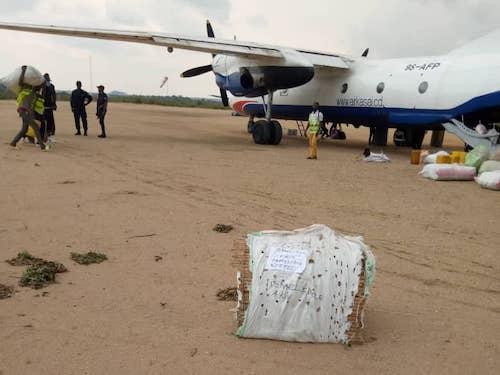
Sadly, this archaic practice was until recently permitted under the Convention on International Trade in Endangered Species of Wild Fauna and Flora (CITES) with DRC a leading exporter of wild African Greys. Although international trade is no longer permitted, traffickers still attempt to get wild parrots out of the country by exploiting weaknesses in permitting systems and border controls.
Fortunately, investigators working with Conserv Congo were quick to act, working with local law enforcement to rescue the parrots from their gloomy future and arrest the perpetrators. The shipment was accompanied by a confusing array of papers, including falsified CITES permits for another species, Jardine’s parrot Poicephalus gulielmi, which can still be legally trapped and exported. The laundering of Grey parrots as Jardine’s parrots has been highlighted previously by the World Parrot Trust. Although quotas for this species were reduced as a result, this finding reinforces the need to immediately end the legal trade in all wild parrots from the region.
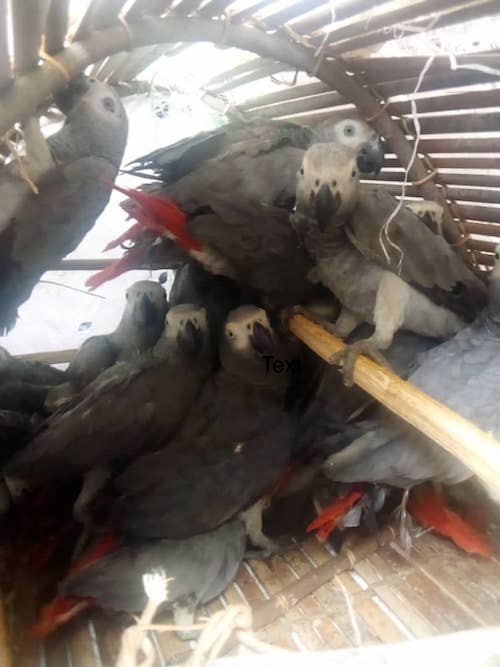
Thanks to our FlyFree programme, which helps parrots seized from trade, we were swiftly able to get vital funds and practical advice to the people on the ground to help stabilise the birds. As is typical for Grey parrots, the wing feathers had been cut so they couldn’t fly away – this meant a long-term plan was needed. We began working with regional partners to find a way to get the parrots to a safe environment where they could receive the care they need. It will take several months before they can be rehabilitated and returned to the wild. The nearest rescue centre with the capacity to care for these birds was hundreds of kilometres away.
An impressive team effort to get the parrots to their new home commenced involving the Institut Congolais pour la Conservation de la Nature (ICCN), Lwiro Primate Rehabilitation Centre (CRPL), Frankfurt Zoological Society (FZS), Conserv Congo and the World Parrot Trust, with everyone rising to the occasion and going above and beyond.
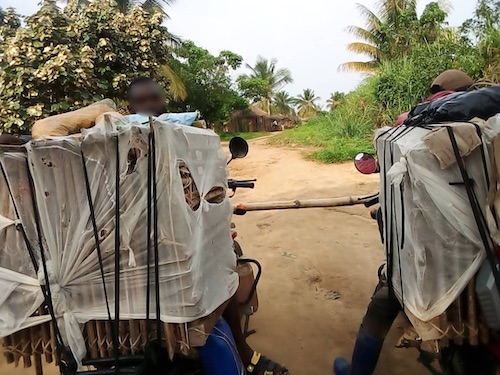
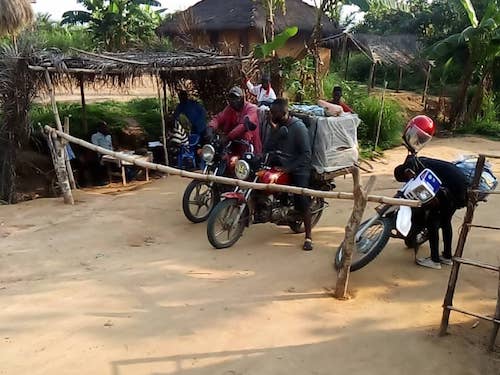
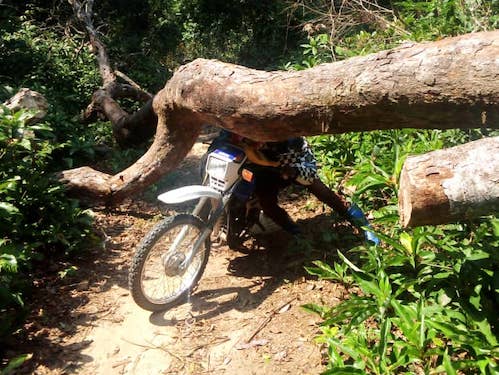
Tragically, on their second night in Lodja, the compound where the parrots were housed was broken into and around half of the parrots were stolen. It was clear that the parrots were not safe and needed to be moved to a safe and secure location as quickly as possible. The 28 remaining parrots were placed into purpose-built transport containers on the back of three motorbikes and set off on a tough 400km journey. The roads in this region are in incredibly poor condition and in some places impassable by 4x4s so motorbikes were the only options. It took the team three days of careful riding, navigating fallen trees, checkpoints and river crossings to reach Kindu.
Once in Kindu, the parrots were handed over to the ICCN and Frankfurt Zoological Society where they joined another group of 14 Grey parrots and a lone baby chimpanzee, also recently seized from traffickers.
The parrots were then transferred by plane to Goma where they were met by CRPL and embarked on a ferry trip the length of Lake Kivu before finally settling in a quarantine facility at Lwiro. Despite all else, the 28 parrots that left Lodja all survived the perilous journey, a clear testament to the commitment of everyone involved.
The African Grey parrots will now undergo individual health checks and begin their rehabilitation for eventual release to the wild. WPT would like to say an enormous thank you to the many people involved in these efforts who always put the parrots first.
